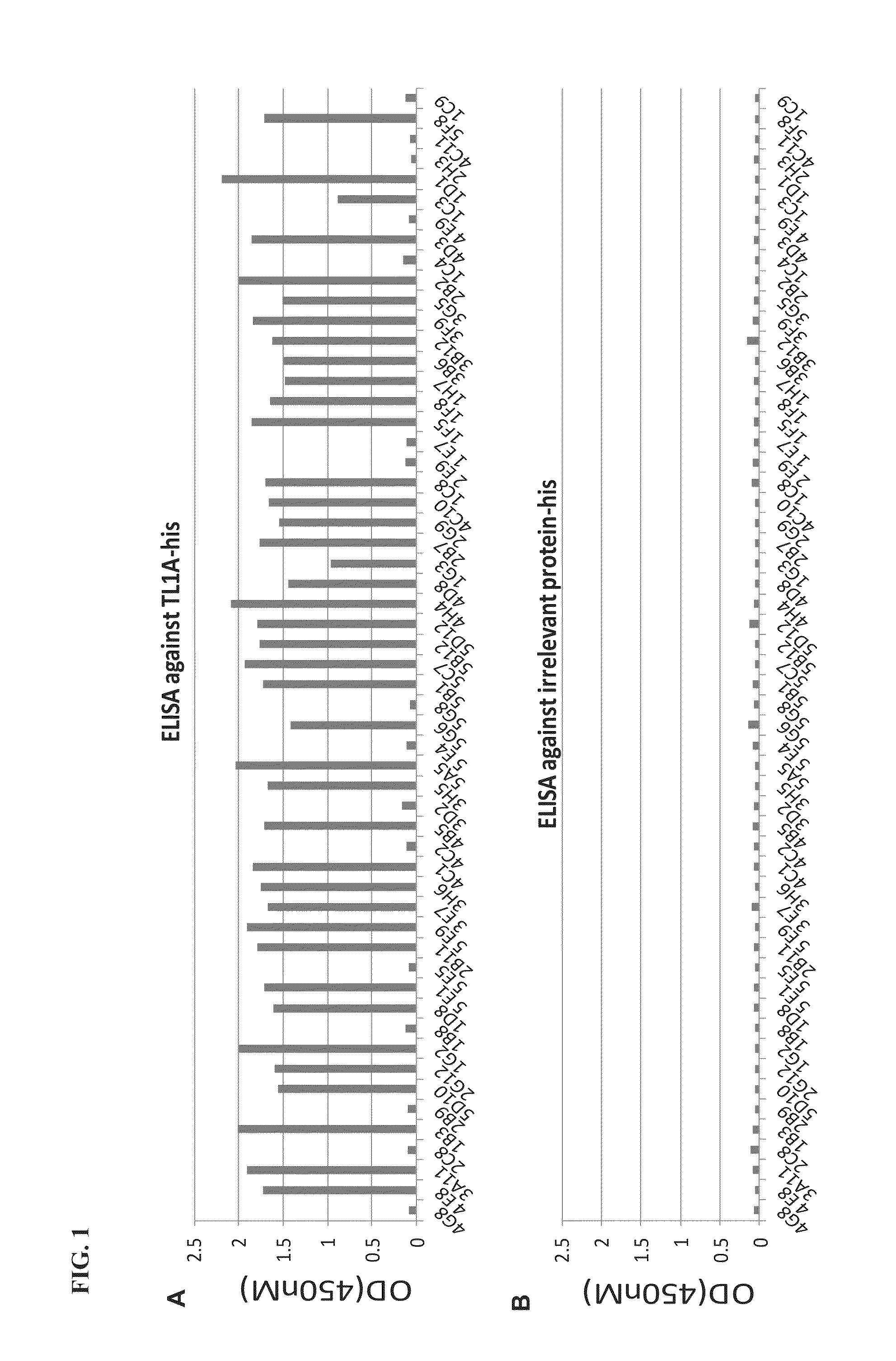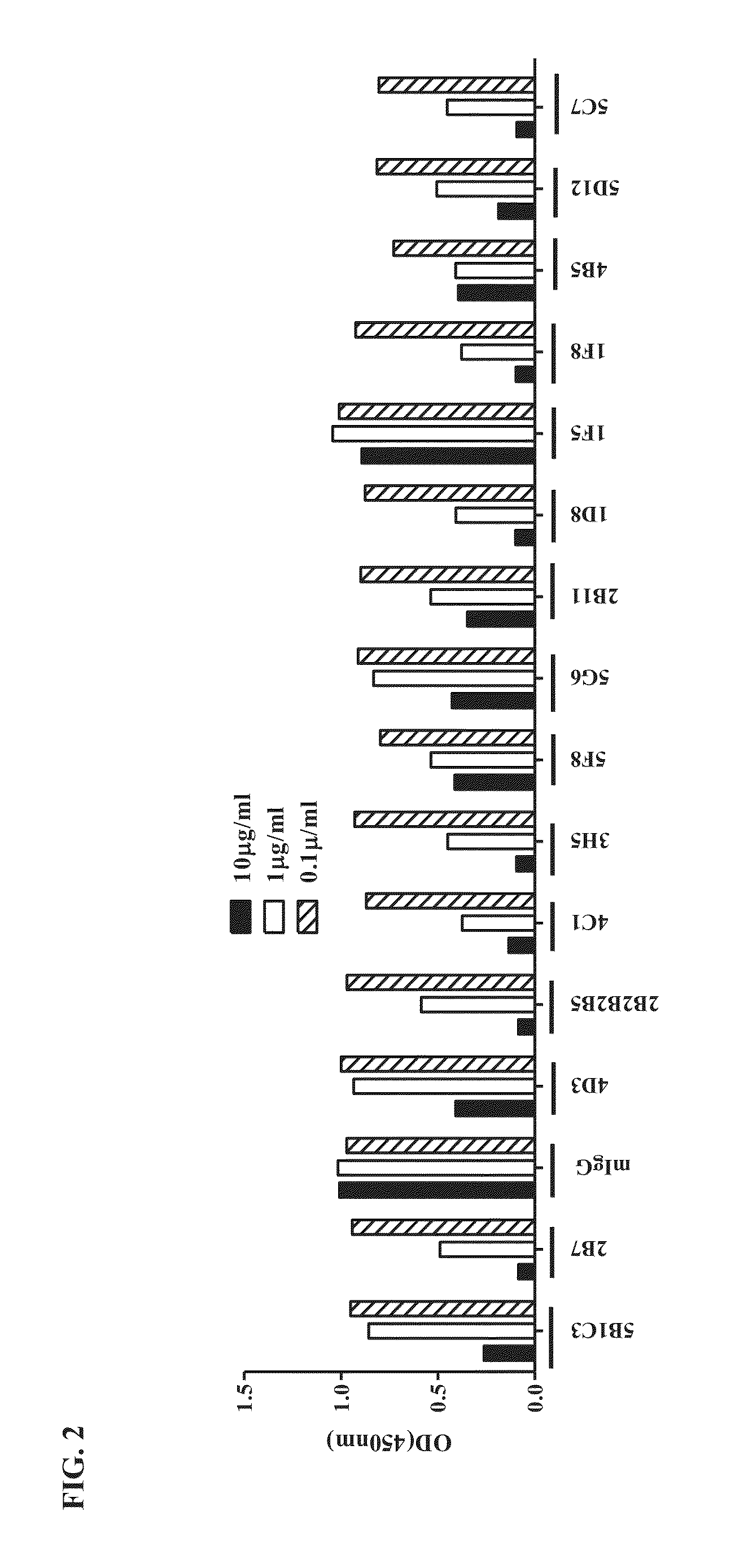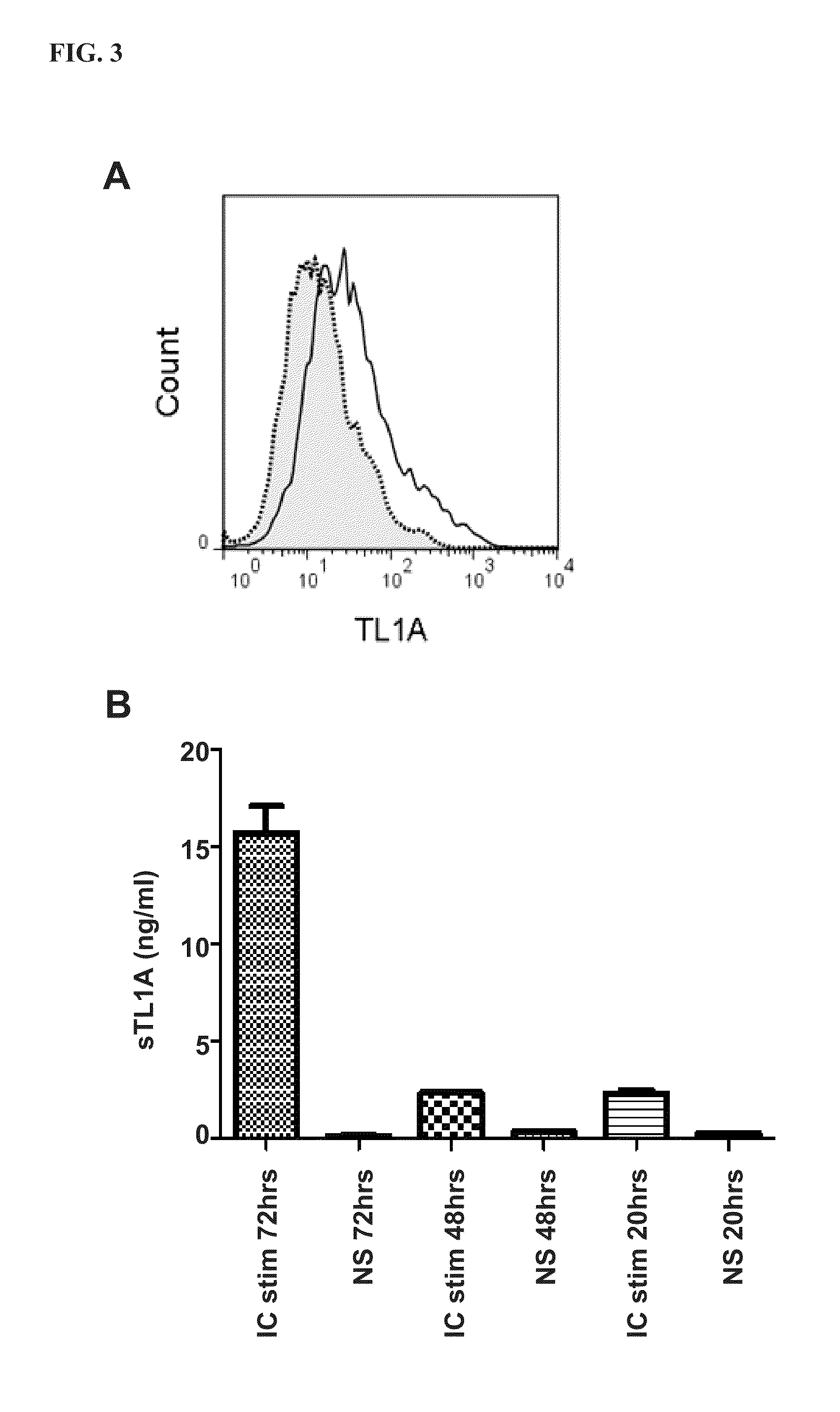Antibodies that bind to tl1a and their uses
- Summary
- Abstract
- Description
- Claims
- Application Information
AI Technical Summary
Benefits of technology
Problems solved by technology
Method used
Image
Examples
Example
Example 1
Generation and Screening of Mouse Anti-Human TL1A Antibodies
[0166]To produce the recombinant human TL1A-Fc protein, a cDNA for the human TL1A gene was purchased from Source BioScience (Nottingham, UK; clone number: IRATp970G02115D). This cDNA was used as a template to amplify the coding region of the processed secreted version of human TL1A (SEQ ID NO: 116) using PCR. The PCR was performed using primers GlnPr994 and GlnPr995 (SEQ ID NOs: 119 and 120, respectively). Primer GlnPr994 adds a BamHI restriction site 5′ of the extracellular region and cleaves the native signal peptide. Primer GlnPr995 adds a HindIII restriction site 3′ of the extracellular region. The amplicon was cut using the flanking restriction sites BamHI and HindIII and cloned into a modified mammalian expression vector based on the pcDNA3.1(−) plasmid from Invitrogen (Invitrogen AG, Basel, Switzerland), expressing an Fc-fusion construct. The expression vector contains the human CMV promoter with the Ig donor a
Example
Example 2
Cloning and Sequencing of the VH and VL Chains of the Anti-TL1A Antibodies from Hybridoma Cells
[0173]For each positively selected hybridoma, total RNA was prepared, reverse-transcribed into cDNA and VH and VL genes were respectively amplified by PCR. These PCR products were ligated into a rescue-vector (pDrive vector, QIAGEN AG, Hombrechtikon, Switzerland), allowing for the DNA sequencing of individual PCR products and the determination of mono- or poly-clonality of the selected hybridomas. This vector allowed for blue / white selection on LB-agar plates containing IPTG and X-gal (colonies with no insert were blue because of the degradation of X-gal by the LacZ α-peptide). Recombinant plasmids from positive (white) bacterial clones were prepared and sequenced using standard DNA sequencing primers specific for the vector backbone (M13rev, M13fwd, T7 or SP6). DNA sequences were finally subcloned into an expression vector for recombinant expression of the antibody of interest in
Example
Example 3
Biological Characterization of Anti-Human TL1A Antibodies
TL1A-Specific Antibody Detection ELISA
[0187]Antibody titers, specificity and production by hybridomas and recombinant antibody candidates were determined by a direct ELISA. Briefly, 96 well-microtiter plates (Costar USA, distributor VWR AG, Nyon, Switzerland) were coated with 100 μl of recombinant human TL1A-his at 2 μg / ml in PBS (see Example 1 for the generation of the TL1A-his protein). Plates were incubated overnight at 4° C. and were then blocked with PBS 2% BSA (Bovine Serum Albumin, PAA Laboratories, Pasching, Austria) at room temperature (RT) for one hour. The blocking solution was removed and the hybridoma supernatants or purified antibodies were added. The plates were incubated at RT for 30 minutes, then washed nine times with PBS 0.01% Tween-20 (Sigma-Aldrich Chemie GmbH, Buchs, Switzerland) and a Horseradish Peroxidase (HRP) labelled-Goat anti-mouse H+L-detection antibody (Sigma-Aldrich Chemie GmbH, Buchs, S
PUM
| Property | Measurement | Unit |
|---|---|---|
| Temperature | aaaaa | aaaaa |
| Fraction | aaaaa | aaaaa |
| Fraction | aaaaa | aaaaa |
Abstract
Description
Claims
Application Information
 Login to view more
Login to view more - R&D Engineer
- R&D Manager
- IP Professional
- Industry Leading Data Capabilities
- Powerful AI technology
- Patent DNA Extraction
Browse by: Latest US Patents, China's latest patents, Technical Efficacy Thesaurus, Application Domain, Technology Topic.
© 2024 PatSnap. All rights reserved.Legal|Privacy policy|Modern Slavery Act Transparency Statement|Sitemap



